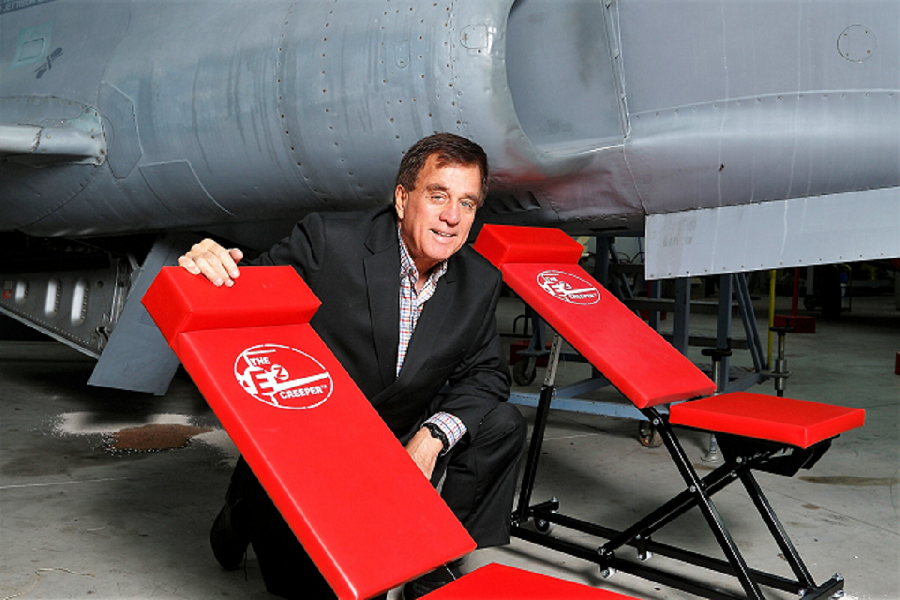Creeping Around
An almost accidental success, a small aviation accessory company reaches a global audience
Photo: G.J. Rancourt with the Ez Creeper, the world’s only aviation creeper
G.J. RANCOURT NEVER set out to start a business, much less one that counts the U.S. Air Force and the U.S. Coast Guard as customers. He just wanted to buy a trolley that let him work on his airplane wings.
Rancourt was looking for an aviation “creeper”—the technical name for the thing mechanics lie on to work under machines—but couldn’t find one. Existing creepers, all geared towards auto mechanics, were too low to the ground for airplanes, and crouching can get tiresome. “Necessity is the mother of all invention,” he says. “We had to invent it, because we couldn’t find it.”
Thus, the Ez Creeper Company was born.
Rancourt tinkered with the design, and eventually settled on what is now called the Ez Creeper Model H: a hydraulic-powered creeper that enables a user to get high enough to work on wings or airplane fuselages and also allows the user to adjust their height and positioning on the fly. “That’s what makes us unique,” he says.
“I had no intention of starting a company. I just wanted to buy an aviation creeper” —G.J. Rancourt
The company received a patent for the hydraulic system in 2012 and began selling the creeper in 2013. “It’s basically designed for general aviation,” says Rancourt.
The creeper has attracted some high-profile clients, including both the Canadian and American air forces, as well as the RCMP and the United States Coast Guard. Rancourt credits that reach to the reputation the product has developed. “Word of mouth is big in the aviation community,” he says. “Our [creeper] is the only one that’ll do what it does.”
The company, says Rancourt, has never had more than 10 employees; it manufactures the hydraulic components in Aylmer and assembles the finished product in London. Most of their shipments go to the U.S., says Rancourt, and they have a warehouse in Port Huron, Michigan.
Compared to other creepers, an Ez Creeper is no small investment: the hydraulic model sells for $949. (They also have a less-expensive version, with a mechanical system rather than a hydraulic one, that costs $499.) But, with a lifetime guarantee, Rancourt says the creeper will pay for itself in increased efficiency. A time analysis, he says, showed that the Ez Creeper saves about 10 per cent of a mechanic’s time. And, he adds, the product provides a much longer life expectancy than an inexpensive mechanic’s creeper.
Rancourt says alterations and additions to the original design have been mostly in response to client feedback about what might be useful. “Some people said they wanted a tool tray,” so they have one of those now. “Basically,” he says, new products are “based on requests from our customers.”
Rancourt says it is a bare-bones philosophy that drives the company. “We specialize in one product and we do it very well,” he says. It just so happens that the small firm has a very global customer base. Rancourt can rattle off a list of countries where the company has sold creepers—Australia, Germany, Switzerland, Papau New Guinea—but curiously, he doesn’t sell many domestically. “Ninety-nine-point-five per cent of everything we manufacture is exported,” he explains, adding that only a “fraction of a per cent” of sales are in Canada, primarily because the aviation community here is “very small.”
All things considered, it’s a pretty significant accomplishment for a guy who stumbled, almost accidentally, into the aviation business. Now, he spends his time jetting from trade show to trade show around the world—he says he does about six or seven every year. “I had no intention of starting a company,” he jokes. “I just wanted to buy an aviation creeper.” ![]() Kieran Delamont
Kieran Delamont

